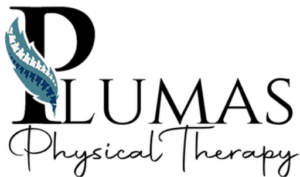Do You Want To Improve Your Overall Wellbeing? Physical Therapy Could Be The Answer

Physical Therapy Can Help Improve Your Health and Wellness!
Physical exercise helps patients with disabilities, diseases, and medical problems improve their physical fitness. A conservative approach to dealing with these issues is to use an individualized physical therapy regimen.
But the benefits of physical therapy don’t stop there; it can also boost your general health and well-being! To learn more about how great physical therapy can be, call our clinic today to get more information and schedule your first appointment.
6 benefits of trying physical therapy
There are several benefits to doing physical therapy to improve your levels of wellness. A handful is as follows:
Fall prevention and balance rehabilitation
With physical therapy, a physical therapist will screen your risk for falling. Exercises will be given to improve your balance in real-life situations. Assistive devices will be given to ensure safe walking. And if you have a problem with your vestibular system, a physical therapist will perform specific methods to reduce or eliminate the symptoms of vertigo and dizziness.
Help with conditions caused by age
With aging, the chances of developing osteoporosis or arthritis are increased. A physical therapist is a trained expert at helping patients recover and manage age-related health problems like osteoporosis and arthritis.
Decreased risk of heart and lung disease
Physical therapy is a component of cardiac rehabilitation. To address pulmonary issues, a physical therapist will help improve your health and quality of life through breathing, strengthening, and conditioning exercises. Physical therapy also helps clear fluid from the lungs.
Mobility improvement
With both passive and active treatments, physical therapy improves mobility. Muscles are strengthened and flexibility is greatly improved. This way you can engage in activities and lead a healthy lifestyle.
Pain relief
Manual therapy treatments like soft tissue mobilization, ultrasound, electric stimulation, and targeted exercises help relieve pain and restore joint and muscle function. These types of methods also help prevent pain from coming back.
Possibility of avoiding surgery
When physical therapy works to heal and reduce pain, the need for surgery is greatly decreased. “For some conditions, including meniscal tears and knee osteoarthritis, treatment by a PT has been found to be as effective as surgery.”
Does physical therapy really work?
Clinical studies support the benefits of physical therapy for health conditions like osteoporosis. Osteoporosis is one of the ten most common illnesses. “Patients were recruited from the osteoporosis outpatient clinics of Klinikum Südstadt hospital and the University Hospital of Rostock to engage in physical therapy for osteoporosis.
Over a period of 3 months, 44 patients with osteoporosis completed a twice-weekly 30-minute intensive exercise program. The conclusion was that physical therapy reduced pain and improved function, with the sling exercise patients benefiting the most.
The combination of functional improvement and pain mitigation resulted in improved health. This study is just one of the many proving the health benefits of physical therapy.
Passive physical therapy and active physical therapy: what’s the difference?
Passive physical therapy treatment
Pain can be managed with passive therapies. The goal of passive physical therapy is to help you control and relieve discomfort so you can get back to doing the things you enjoy.
The remainder of your recovery regimen would be easier to complete if you eliminate pain first. Passive procedures are performed first so that you can concentrate on regaining strength and function later in the recovery plan.
Passive physical therapy can include any combination of these special treatments, as deemed fit by your physical therapist. These include, but are not limited to:
- Dry needling
- Ultrasound
- Hydrotherapy
- Electrical stimulation, such as TENS Units
- Iontophoresis
- Manual therapy
- Massage
- Ice and heat therapies
Active physical therapy treatment
Active rehabilitation concentrates on specific movements and stretches to increase function of the affected region.
In the latter phases of a physical therapy recovery schedule, the aim of successful interventions is to include activities that the patient can perform on their own. Indeed, many successful physical therapy therapies are planned so that patients can do them on their own after their PT sessions are over.
Once the pain or irritation has subsided to the point that your physical therapist feels you are eligible for active physical therapy, he or she will devise a workout program tailored to your individual needs.
The exercises prescribed in an active treatment plan are all geared toward helping you gain back your flexibility, range of motion, and muscle strength. These exercises will help provide support to the painful area and will guide you further in your recovery process.
Are you ready to discover the benefits of PT?
Physical therapy provides you with an individualized recovery schedule that addresses your specific challenges and fitness priorities. Physical therapy may assist you with managing pain, improving chronic injuries, recovering from an accident, and avoiding potential chronic diseases.
Your physical therapist may also work with other health providers to guarantee that you get the best treatment possible. Patients are urged to take an active role in their recovery process. If you’re looking for a new way to get in shape and improve your overall wellness, contact our clinic today to set up an appointment.
Sources:
- https://www.ncbi.nlm.nih.gov/pmc/articles/PMC3511275/
- Types and Benefits of Hydrotherapy – Verywell Healthhttps://www.verywellhealth.com › … › Holistic Health
- Prevent Falls and Fractures | National Institute on Aginghttps://www.nia.nih.gov › health › prevent-falls-and-fract…
- https://www.choosept.com/Benefits/Default.aspx
